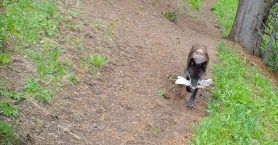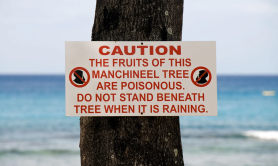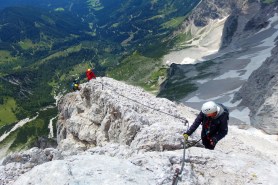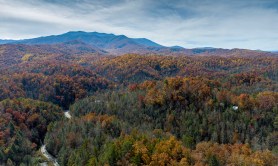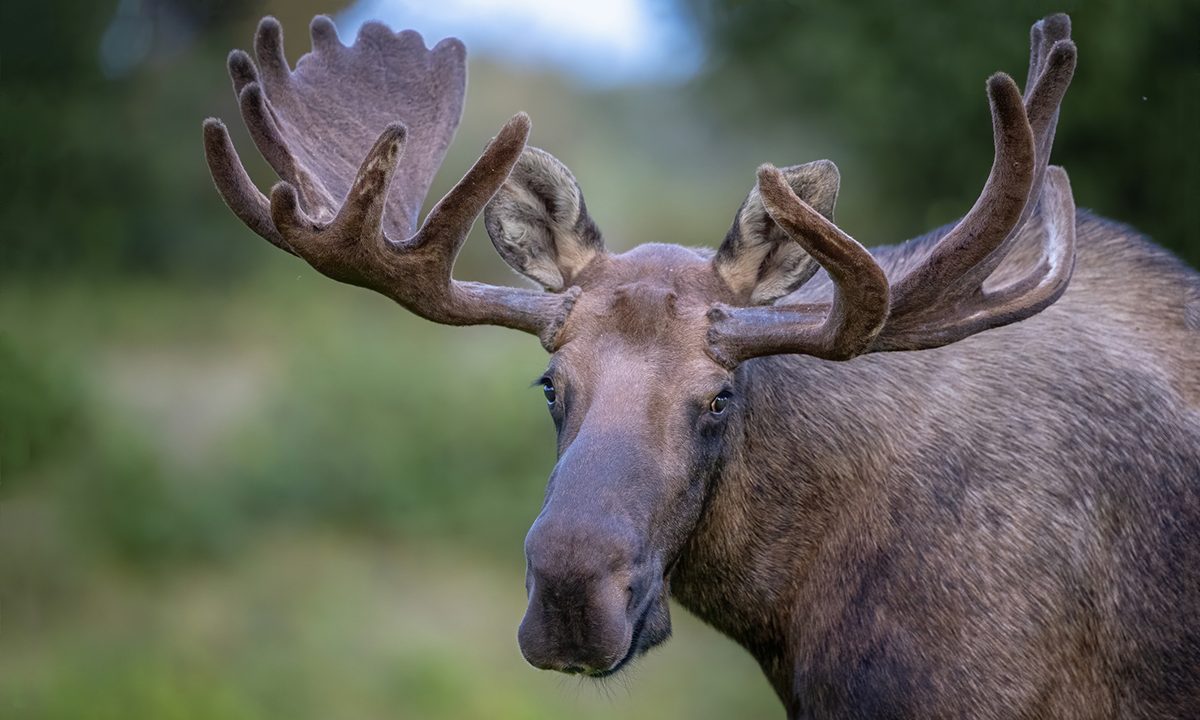

Moose are marvelous, massive creatures—some of the largest in North America, in fact—but they’re often seen as slow, lumbering, and not very intelligent (no thanks to popular media representations like the beloved Bullwinkle). However, those misconceptions couldn’t be further from the truth.
Videos by Outdoors with Bear Grylls
We spoke with Mike Schrage, a wildlife biologist who spends a lot of time studying moose for the Fond du Lac Band of Lake Superior Chippewa in Minnesota. Schrage breaks down some all-too-common moose myths to help keep you safe when recreating outdoors where these majestic creatures wander.
Don’t believe these six moose myths:
MYTH 1: Moose are slow.
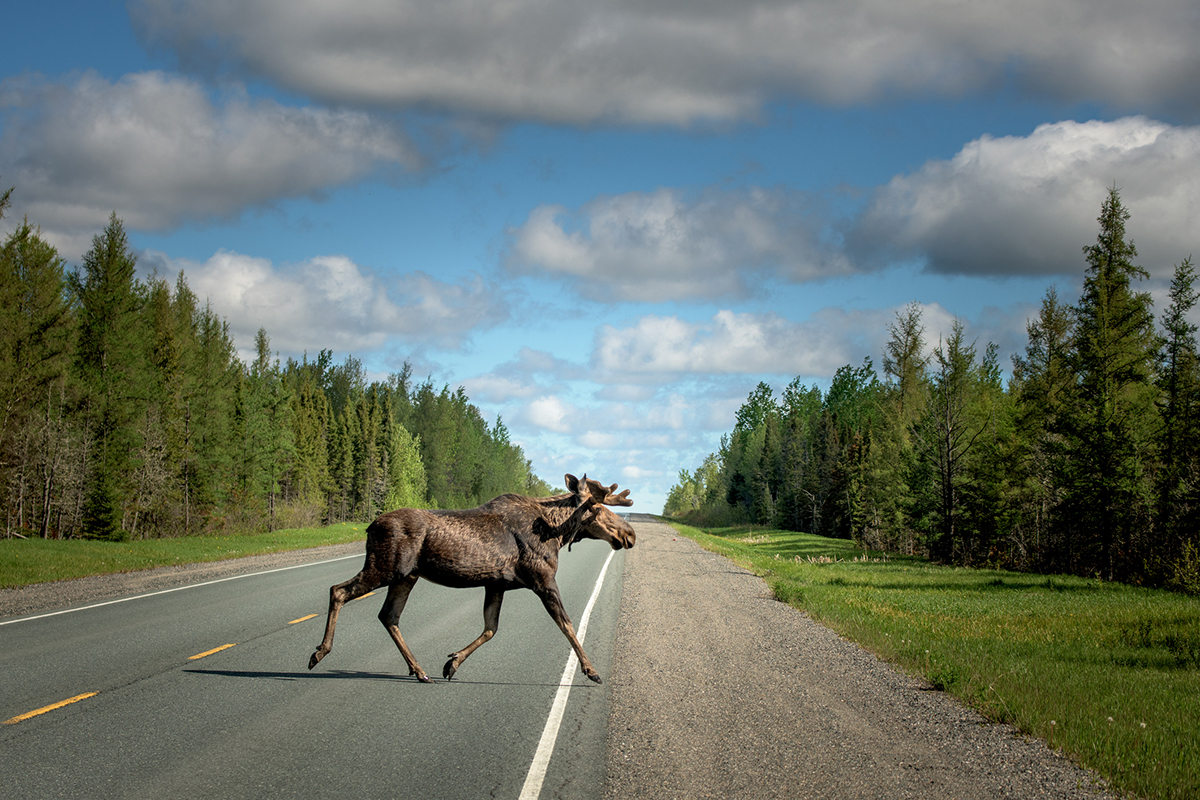
While moose may look awkward and lumbering (Schrage recalls a fellow biologist once referred to the animals as long-eared, rubber-nosed swamp donkeys), don’t be deceived; moose can move. In fact, adult moose can run 25-30 mph, likely faster over very short distances. They can’t keep up top speeds for very long—they weigh up to 1,800 lbs, after all—but even at their slowest, they’re much faster than you.
“They have 6-foot long legs,” Schrage says. “They don’t have to move quickly to cover a lot of ground.” Even baby moose, known as calves, are fast enough to outrun an adult human by the time they’re just five days old.
MYTH 2: Moose are docile.
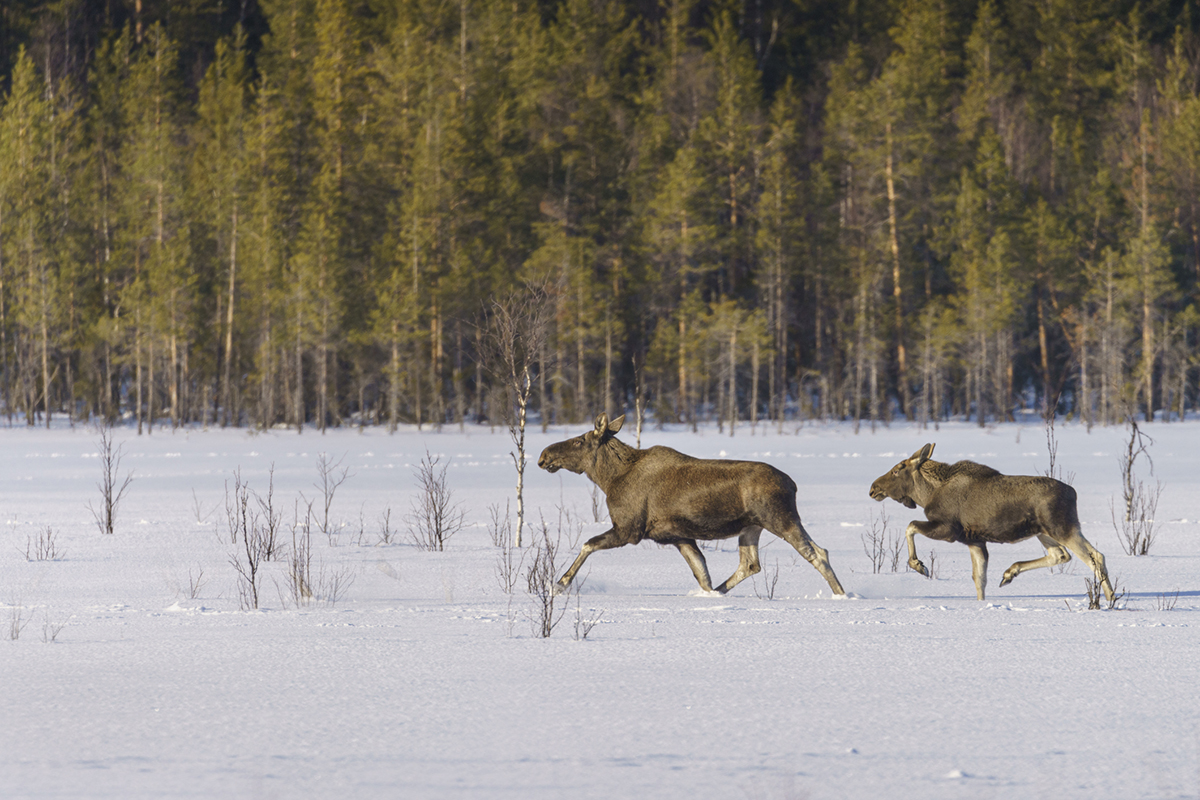
While moose can be docile and aren’t typically looking for a fight, spook one at the wrong place and time and they won’t hesitate to show you who’s the bigger, stronger animal. “They are quite capable and willing to deal with threats,” explains Schrage, who points out that they frequently share territory (regions with boreal forests) with predators like wolves and bears and are well outfitted to defend themselves, particularly with long front legs and large hooves that could easily crush a person’s skull.
So while they are herbivores and may not inspire the same fear and respect as the carnivores and omnivores with whom they share territory, moose are still wild animals.
MYTH 3: Moose without antlers are females or cows.

While cows never grow antlers, males, much like many other members of the deer family, lose their antlers annually every winter and don’t start growing them back for about three to four months. So if you spot a moose in the winter, don’t assume it’s a lone female based on the lack of massive antlers. Young males, or bull calves, also don’t grow antlers until they’re at least a year old.
Fun fact: during peak growth periods when moose are in their prime, antlers can grow an inch a day, which explains how their headpieces can reach such impressive sizes in just a few short months.
MYTH 4: Spring is the most dangerous time to cross paths with a moose.
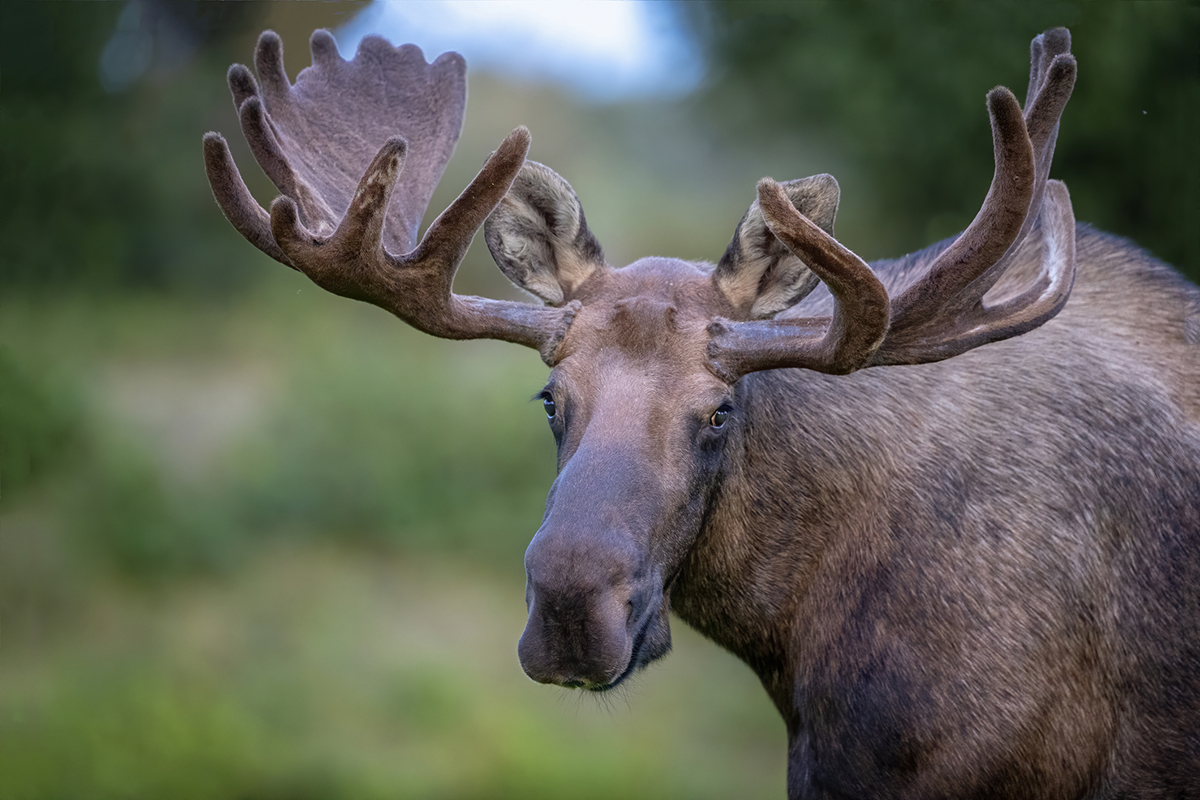
Indeed, late spring and early summer can be a dangerous time to find yourself too close to a moose, if you happen upon a cow accompanied by her young calf. Like other wild animals, mothers can and will act defensively with even the slightest provocation if they think their young are in danger. And it doesn’t take much; all you have to do is get too close or plant yourself in-between her and her young and she’s liable to charge. However, with that said, “A cow moose will try to protect a calf at any time,” Schrage states, not just in the spring.
For instance, you should show just as much caution in the fall during rut or mating season, as this is when bull moose are amped up on hormones, have only one thing on their minds, and can become aggressive easily. This time of year, bulls are more likely to dual with one another for breeding rights and react more aggressively to anything they perceive as a threat as they search for a mate.
MYTH 5: Moose are strictly land-dwellers.
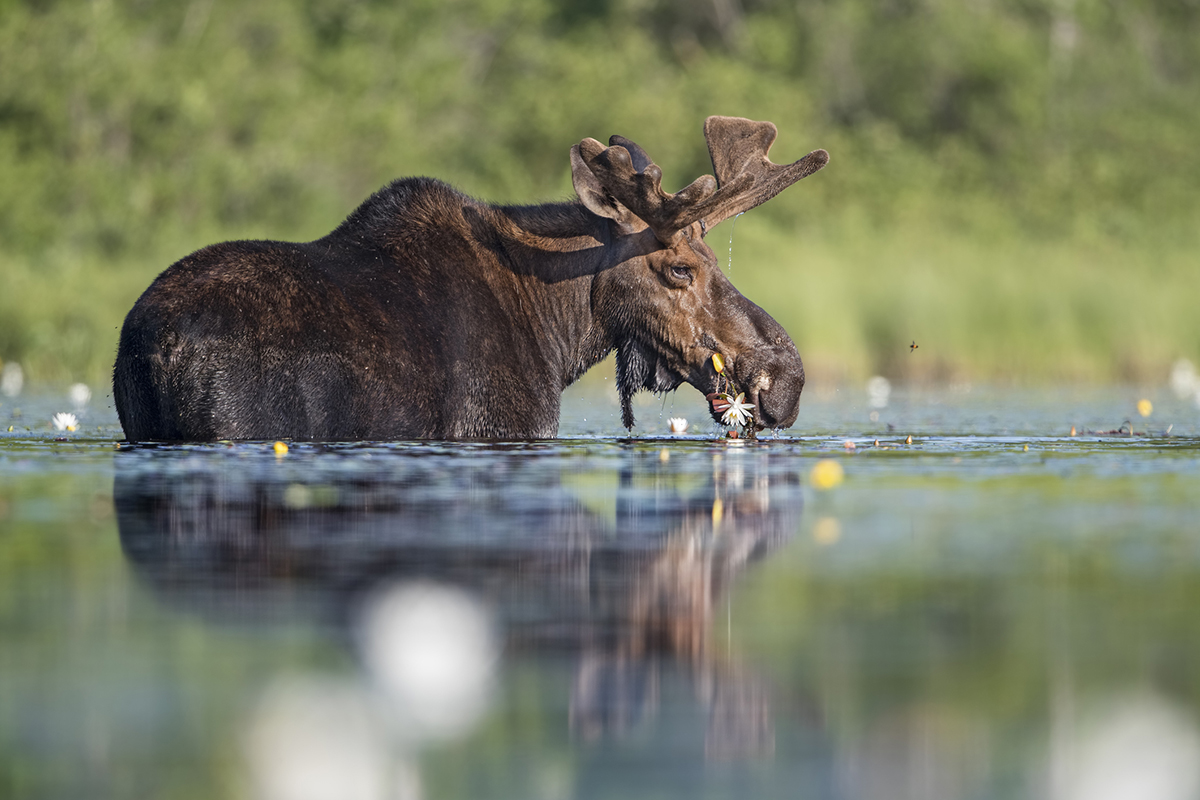
While moose do indeed spend most of their time on Terra Firma, they are exceptionally good swimmers and spend plenty of time not only grazing in the shallows or lakes and rivers but also swimming in deeper waters. In fact, a moose can dive down to 20 feet below the surface in search of tasty plant life.
Moose also use bodies of water as a way to cool down in the summer when they have a hard time regulating their body temperature, so don’t think that just because you’re across a creek or canoeing past a moose on land means that you’re out of reach.
MYTH 6: There’s no way to fend off a moose attack.
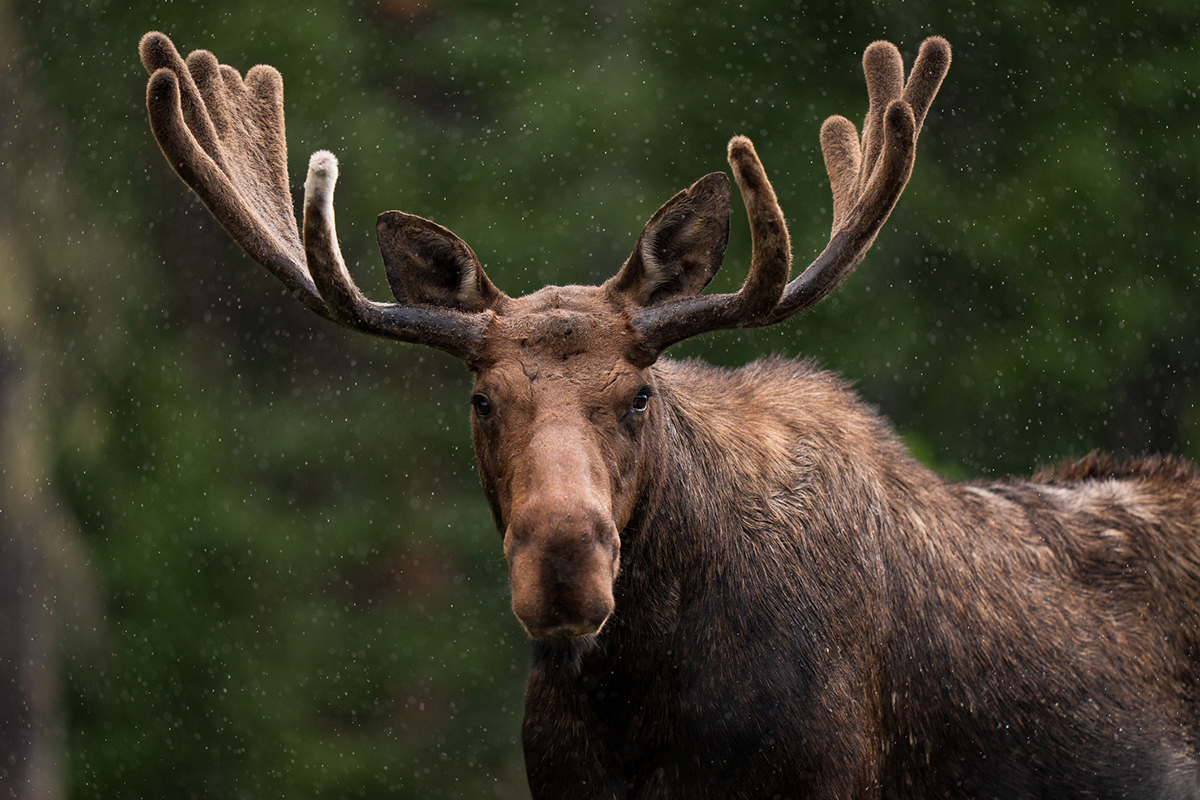
The best defense when it comes to avoiding moose encounters is to leave plenty of space between you and the animal. The general rule is 25 yards. “They’re not looking for a fight so don’t bring it to them,” Schrage states. If you do find yourself too close, say if you round a bend in the trail and find one peacefully munching leaves nearby, back away and watch for signs that the moose is perturbed by your presence—e.g., standing its ground instead of moving away, laying its ears back, or moving toward you.
If you find yourself in that very unfortunate position, don’t panic. Instead, hide behind a large tree, climb a tree, or scramble up some rough terrain. “They’re not mountain goats,” Schrage says; they won’t be able to follow you up boulders or a steep cliff face, so if you have the ability to climb out of their reach, do so. If a moose loses sight of you, it’s likely to give up the chase.
Do be cautious no matter what end of the moose you’re on; they can kick in any direction and stand on their hind legs to use their front hooves as weapons.
Fortunately, fatal moose confrontations are rare, though the creatures do injure about 5-10 people in Alaska alone each year. Just respect their personal space, don’t underestimate their size, speed, and power, and if all else fails, dive behind a tree for safety.


